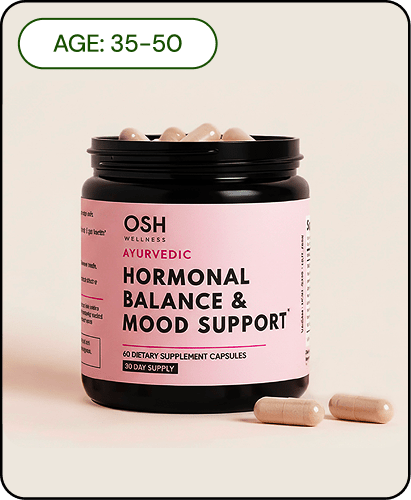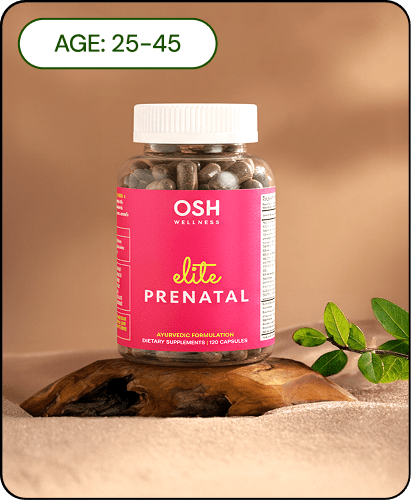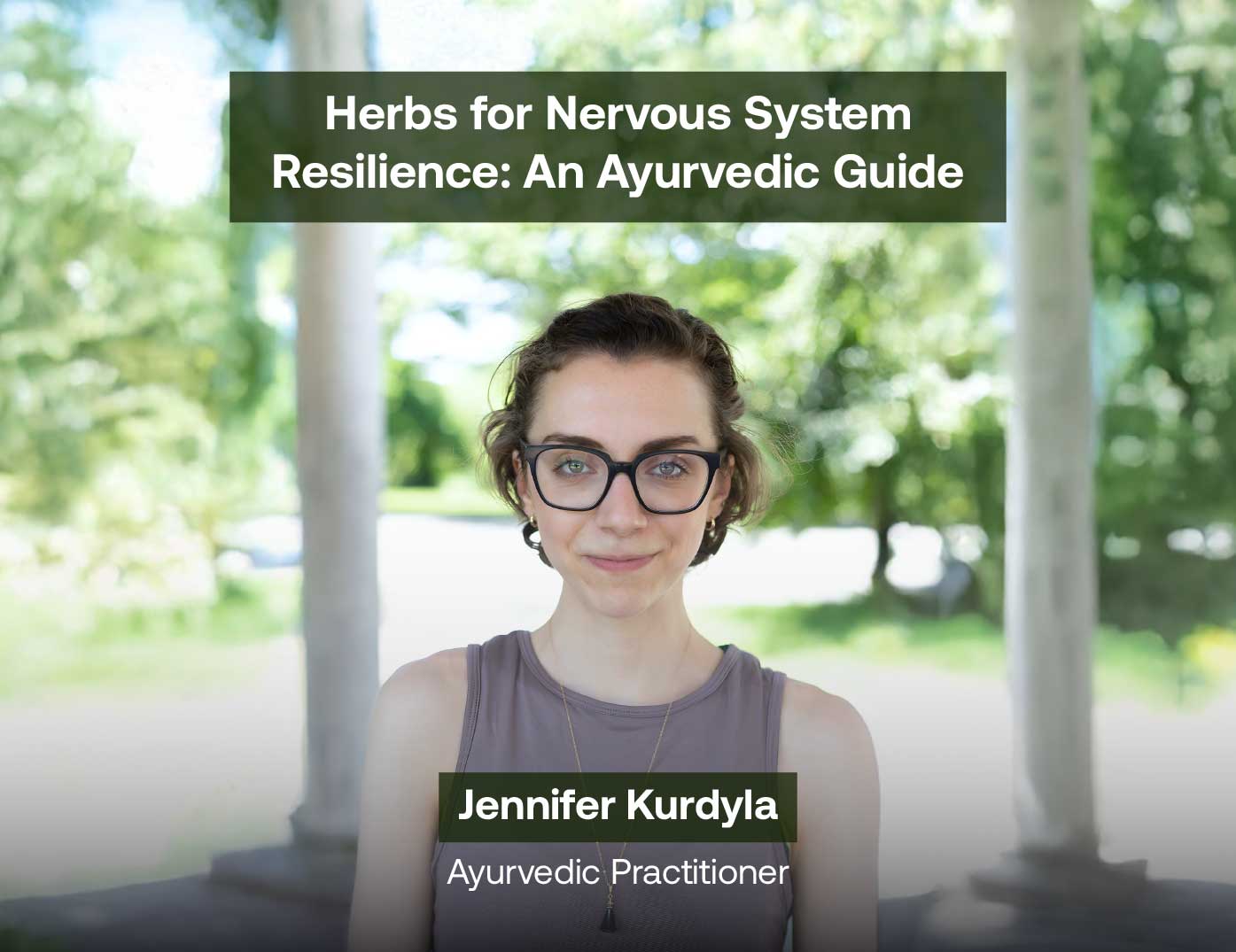Table of contents
As women enter perimenopause , they often face a range of uncomfortable symptoms, including joint aches, skin dryness, and insomnia. These experiences are attributed primarily to two key factors: age-related hormonal changes, particularly declining estrogen levels, and an increase in the Vata dosha, as recognized in Ayurveda. This article delves into the interplay of these influences and provides insights to help women navigate their perimenopausal journey with greater ease and understanding.
Introduction to Perimenopause and Its Challenges

Women undergoing perimenopause experience varied challenges stemming from hormonal fluctuations, especially the decline in estrogen. These biological shifts are not only acknowledged by modern science but also resonate with Ayurvedic concepts, particularly a shift in Vata dosha.
Some of the most commonly reported symptoms during this stage include:
Joint and muscle aches: Increased stiffness and discomfort are often linked to Vata imbalances that reduce tissue lubrication, affecting the efficacy of synovial fluid in joints, essential for mobility and comfort [1].
Skin dryness and loss of elasticity: Reduced estrogen levels lead to skin changes, while heightened Vata contributes to irritation and sensitivity [1].
Insomnia and sleep disturbances: Night sweats and anxiety, amplified by Vata's erratic qualities, hinder restful sleep [1].
As Vata increases during perimenopause, women also face an increased risk of issues like osteoporosis. Managing Vata-driven symptoms through consistent routines, nourishing self-care, and mindfulness aligns with Ayurvedic wisdom for restoring equilibrium [1].
Understanding Aging and Menopause

The natural aging process is deeply intertwined with hormonal changes specific to perimenopause. Typically beginning in a woman’s late 30s or early 40s, this phase can last several years and is characterized by fluctuations in estrogen and progesterone due to declining ovarian function [2].
Hormonal shifts during perimenopause influence the hypothalamic-pituitary-gonadal axis, increasing follicle-stimulating hormone (FSH) levels and triggering symptoms such as:
Menstrual irregularities: Affects around 82% of women, with changes in frequency or flow [3].
Vasomotor symptoms: Hot flashes and night sweats impact up to 75% of women [2].
Genitourinary changes: Vaginal dryness and tissue thinning increase discomfort and infection risks [2].
Mood and cognitive disturbances: Hormonal imbalance can cause anxiety, forgetfulness, and irritability [2].
It becomes evident that these symptoms stem not just from aging alone, but from complex endocrine changes that disrupt the body’s equilibrium.
The Role of Vata Dosha in Perimenopause

In Ayurvedic philosophy, Vata dosha, associated with air and space, is linked to qualities like dryness, lightness, coolness, and irregularity. As women approach menopause, Vata tends to become dominant, contributing to myriad symptoms [4].
Key manifestations of Vata imbalance include:
Irregular menstrual cycles: Disruption in the reproductive rhythm [4].
Heightened anxiety and restlessness: Emotional instability due to an impacted nervous system [4].
Sleep disturbances: Vata’s mobile nature often hinders deep and restorative sleep [4].
Generalized dryness: Affects skin, hair, and vaginal tissues [5].
Weakened bones: Combined effects of estrogen loss and Vata-induced dryness increase osteoporosis risk [6].
Recognizing these signs enables proactive steps toward lifestyle and treatment choices that mitigate Vata-related imbalances.
Lifestyle Adjustments for Managing Symptoms

Making lifestyle changes to manage rising Vata dosha is essential in minimizing discomfort during perimenopause. These include dietary, behavioral, and physical activity modifications tailored to re-establish balance.
Key adjustments include:
Nourishing diet: Opt for warm, moist, and grounding foods such as soups, stews, root vegetables, avocados, and healthy fats [7].
Regular routine: Maintain consistent meal and sleep times to avoid Vata aggravation [8].
Use of spices: Incorporate ginger, cinnamon, nutmeg, and garlic to support digestion and circulation [9].
Abhyanga (oil massage): Warm sesame oil soothes dryness and calms the nervous system [10].
Gentle exercises: Engage in yoga, tai chi, or light walking to promote stability and lessen mental agitation [11].
These daily rituals, when practiced consistently, build resilience against hormonal and energetic imbalances.
Ayurvedic Remedies for Balancing Vata

Ayurvedic herbs and therapies are vital in managing Vata's dry, cool, and light characteristics. These remedies promote warmth, moisture, and grounding effects essential during perimenopause.
Recommended Ayurvedic tools include:
Herbs: Ginger for digestive warmth, licorice (Mulethi) for anxiety relief, and cinnamon for circulation support [12].
Oiling therapies: Abhyanga with sesame or almond oil calms the body and improves skin texture [13].
Internal moisture: Include ghee, coconut oil, milk, and butter to combat internal dryness [14].
Combined with warm, consistent routines and the right nutrition, these approaches help stabilize hormonal activity and support emotional well-being.
Integrating Holistic Practices for Health Management

Blending Ayurvedic practices with modern medical understanding provides the most effective strategy for navigating perimenopause. A growing body of case studies highlights the success of such integrative methods.
Examples include:
A 47-year-old woman experienced relief from hot flashes, mood swings, and irregular cycles through treatments like Kostha Suddhi and Palashadi Yoga Basti [15].
An eight-patient case series found therapies like Shirodhara and Padabhyanga significantly improved both somatic and psychological symptoms [16].
Herbal remedies such as Shatavari and Ashwagandha are reported to support hormone regulation and reduce stress-related symptoms [17]. These accounts affirm the potential of combining Ayurveda with mainstream care to foster comprehensive healing [18].
Relevant Products
Osh Wellness Hormone & Mood Support is a targeted herbal supplement aimed at easing mood fluctuations, sleep disturbances, and hormonal imbalances commonly experienced during perimenopause. Its natural formulation makes it ideal for those seeking an integrative approach to symptom relief.
Conclusions

Recognizing that perimenopause symptoms are influenced by both biological changes and Vata dosha imbalances empowers women to make informed, holistic decisions. Merging Ayurvedic principles with modern health practices, through tailored lifestyle choices and time-tested herbal support, can significantly ease the perimenopausal journey and lead to greater vitality and well-being.
FAQs
What are the primary reasons for experiencing aches during perimenopause?
Aches often result from hormonal changes affecting joints, compounded by increased Vata dosha that causes dryness and stiffness.
How can dry skin and vaginal dryness be addressed naturally?
Using nourishing oils, maintaining hydration, and eating a Vata-pacifying diet can help restore moisture and skin elasticity.
What lifestyle changes can help manage insomnia during perimenopause?
A consistent bedtime routine, limiting caffeine, and engaging in calming physical activities like yoga can improve sleep.
Are there specific herbs recommended for balancing Vata?
Yes. Ashwagandha, Shatavari, ginger, and Triphala are commonly used to ease Vata-related symptoms.
How can women differentiate between aging effects and Vata imbalances?
Consulting an Ayurvedic practitioner and observing symptoms related to dryness, irregularity, or restlessness can help distinguish between normal aging and dosha imbalances.
Sources
1: Journal of Ayurveda and Integrated Medical Sciences - Vata and Perimenopause
2: PMC - Overview of Perimenopause Symptoms
3: Cleveland Clinic - Perimenopause
4: Ayutherapy - Ayurvedic Guide to Perimenopause
5: Easy Ayurveda - Perimenopause Ayurvedic Treatment & Lifestyle
6: Purusha Ayurveda - Your Ayurvedic Dosha and Menopause
7: Dabur - How to Balance Vata Dosha
8: Kudos Ayurveda - Ayurvedic Lifestyle Changes to Manage Vata
9: Banyan Botanicals - Ayurvedic Balancing Vata
10: Advanced Integrated Health - How to Remove Excess Vata from Body
11: Kerala Ayurveda - Signs and Solutions for Fall Imbalance
12: Jiva Ayurveda - How to Reduce Vata Dosha in Your Body
13: Kerala Ayurveda - Guide to Vata Dosha
14: Jeena Sikho - Understanding and Balancing Vatta Dosha with Ayurveda
15: International Journal of Advanced Research - Ayurvedic Interventions in Perimenopause
16: Hindustan Times - Ancient Fixes for Menopause
17: World Journal of Pharmaceutical Research - Ayurvedic Practices in Women's Health
18: PubMed Central - Traditional Ayurveda and Its Modern Application








